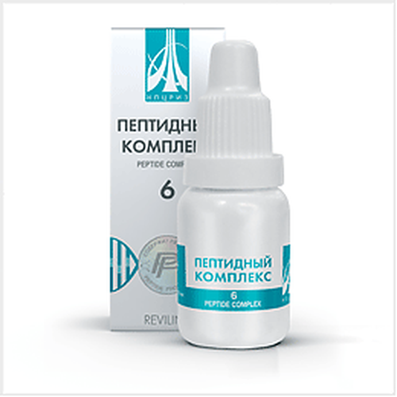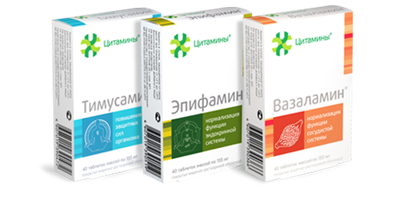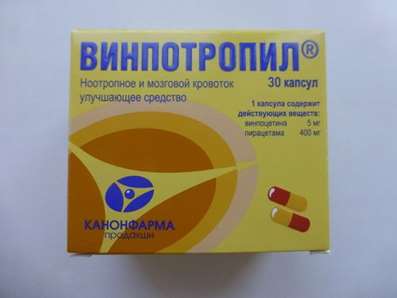Instruction for use: Fluvoxamine
I want this, give me price
Latin name of substance Fluvoxamine
Fluvoxaminum (genus. Fluvoxamini)
Chemical name
(E) -5-Methoxy-1- [4- (trifluoromethyl) phenyl] -1-pentanone-0- (2-aminoethyl) oxime (as maleate)
Gross formula
C15H21F3N2O2
Pharmacological group:
Antidepressant
The nosological classification (ICD-10)
F32 Depressive episode: Adynamic subdepression; Astheno-adynamic subdepressive states; Asthenoadressive disorder; Astheno-depressive disorder; Asthenodepressive state; Astheno-depressive state; Major Depressive Disorder; Vyaloapatichesky depression with retardation; Double Depression; Depressive pseudodement; Depressive illness; Depressive mood disorder; Depressive disorder; Depressive mood disorder; Depressive state; Depressive disorders; Depressive syndrome; Depressive syndrome larviated; Depressive syndrome in psychoses; Depressed masks; Depression; Depression Depletion; Depression with the phenomena of inhibition within the framework of cyclothymia; Depression is smiling; Involutional depression; Involutionary melancholy; Involutional depression; Manic-depressive disorder; Masked Depression; Melancholic Attack; Neurotic depression; Neurotic depression; Shallow Depression; Organic depression; Organic depressive syndrome; Simple depression; Simple melancholic syndrome; Psychogenic depression; Reactive depression; Reactive depression with moderate psychopathological symptoms; Reactive depressive states; Reactive depression; Recurrent depression; Seasonal depressive syndrome; Severostatic depression; Senile Depression; Symptomatic Depression; Somatogenic depression; Cyclotymic depression; Exogenous depression; Endogenous depression; Endogenous Depressive Conditions; Endogenous Depression; Endogenous depressive syndrome
F42 Obsessive-compulsive disorder: Obsessive-compulsive syndrome; Obsessive compulsive states; Obsessive-compulsive syndrome; The Obsession Syndrome; The obsession neurosis; Obsessive-compulsive neurosis; Obsessions
CAS code
54739-18-3
Characteristics of the substance Fluvoxamine
Antidepressant group SSRIs.
Fluvoxamine maleate is a white or almost white crystalline powder, odorless. Very soluble in ethyl alcohol and chloroform, poorly soluble in water, practically insoluble in diethyl ether. Lipofilen.
Pharmacology
Pharmacological action - antidepressant.
Selectively inhibits the reverse neuronal capture of serotonin from the synaptic cleft, blocking the membrane pump of the presynaptic membrane. Promotes increased serotonergic transmission and reduced serotonin turnover. Blocking the reuptake of serotonin in platelets. Slightly affects the re-uptake of dopamine and norepinephrine. Has no effect on histaminergic, alpha and beta adrenergic, m-cholinergic, dopaminergic, 5-HT1 and 5-HT2 receptors. There are data on the effectiveness of fluvoxamine in obsessive-compulsive disorders, including. in children and adolescents (8-17 years).
Well absorbed from the digestive tract. Bioavailability is not dependent on food intake and is about 53% (due to the effect of "first pass" through the liver). If you take 10 days at doses of 100, 200 and 300 mg / day, the equilibrium concentration in the blood is reached after about 1 week. Cmax in the equilibrium state is achieved within 3-8 hours after administration and is 88, 283 and 546 ng / ml, respectively. Correlation between plasma concentration and efficacy was not observed. Binding to plasma proteins - about 80% (mainly with albumin). The distribution volume is high - 25 l / kg. In the liver, it undergoes demethylation and deamination; identified nine inactive metabolites (fluvoxamine acid, fluvoxethanol, etc.). Inhibits cytochrome P450 isoenzymes: CYP1A2, CYP3A4, CYP2C9, weaker effects on CYP2D6. T1 / 2 - 15-20 hours 94% excreted in the urine for 71 hours (2-3% unchanged).
When studying the excretion of fluvoxamine in patients with impaired renal function (Cl creatinine 5-45 ml / min), who received it 50 mg twice a day, no cumulation was observed; with hepatic dysfunction, the excretion of fluvoxamine decreased by 30%. In patients with a genetically determined deficiency of the CYP2D6 enzyme (2-10% of the population), Cmax, AUC and T1 / 2 increase by 52%, 200% and 62%, respectively. In elderly patients (66-73 years), Cmax fluvoxamine is 40% higher, excretion is 50% lower compared to younger patients (19-35 years old). T1 / 2 in the elderly is 17.4 and 25.9 hours after admission in a dose of 50 and 100 mg, respectively (in young people - 13.6 and 15.6 hours). In smokers, the bioavailability of fluvoxamine is reduced by induction of its metabolism (by 25%).
In animal studies, weight loss and fetal survival were shown, an increase in their intrapartum death rate with fluvoxamine during pregnancy at a dose 2-4 times higher than MPDH. Concentration in breast milk is 3 times less than that in blood plasma (0.09 and 0.31 mg / L, respectively, when taken at a dose of 100 mg / day).
Application of Fluvoxamine
Depression of various genesis, obsessive-compulsive disorder.
Contraindications
Hypersensitivity, hepatic insufficiency, simultaneous administration of astemizole, cisapride, terfenadine, agents that inhibit MAO (including furazolidone, procarbazine, selegiline), breastfeeding, children under 8 years old.
Restrictions on the use
Epilepsy, pregnancy; drug addiction, mania, hypomania, convulsive conditions, or myocardial infarction in anamnesis.
Application in pregnancy and lactation
Use with caution in pregnancy, comparing the intended benefit to the mother and the potential risk to the fetus.
The action category for fetus by FDA is C.
For the duration of treatment, breastfeeding should be abandoned.
Side effects of Fluvoxamine
Of the 1087 patients with obsessive-compulsive disorder and depression who received fluvoxamine during controlled clinical trials in North America, 22% of patients discontinued due to side effects. Among them were noted (in brackets the percentage of occurrence in the placebo group is indicated):
From the nervous system and sensory organs: headache 3% (1%), dizziness 2% (less than 1%), asthenia 2% (less than 1%), insomnia 4% (1%), drowsiness 4% (less than 1% ), nervousness 2% (less than 1%), anxiety 1% (less than 1%), agitation 2% (less than 1%).
From the digestive tract: nausea 9% (1%), anorexia 1% (less than 1%), dry mouth 1% (less than 1%) dyspepsia 1% (less than 1%), vomiting 2% (less than 1%), diarrhea 1% (less than 1%), abdominal pain 1% (0%).
In placebo-controlled trials in patients with obsessive-compulsive disorders who received fluvoxamine at a dose of 100-300 mg / day for 10 weeks and with depression who received fluvoxamine at the same dose for 6 weeks, with a frequency greater than 1%, there were observed the following side effects (in brackets the percent of occurrence in the placebo group is indicated):
From the nervous system and sensory organs: headache 22% (20%), dizziness 11% (6%), asthenia 14% (6%), drowsiness 22% (8%), insomnia 21% (10%), nervousness 12% (5%), anxiety 5% (3%), agitation 2% (1%), depression 2% (1%), CNS stimulation 2% (1%), tremor 5% (1%), taste change 3% (1%), amblyopia 3% (2%).
From the cardiovascular system and blood (hematopoiesis, hemostasis): heartbeat 3% (2%), vasodilation 3% (1%), hypertension 2% (1%).
On the part of the respiratory system: upper respiratory tract infections 9% (5%), dyspnoea 2% (1%), yawn 2% (0%).
On the part of the digestive tract: anorexia 6% (2%), dry mouth 14% (10%), tooth damage 3% (1%), dysphagia 2% (1%), indigestion 10% (5%), nausea 40 % (14%), flatulence 4% (3%), diarrhea 11% (7%), constipation 10% (8%), vomiting 5% (2%).
On the part of the genitourinary system: violation of ejaculation 8% (1%), decreased libido 2% (1%), impotence 2% (1%), anorgasmia 2% (0%), increased urination 3% (2%), urinary retention 10%).
Other: flu-like syndrome 3% (2%), chills 2% (1%), sweating 7% (3%).
Interaction
Incompatible with agents that inhibit MAO, incl. furazolidone, procarbazine and selegiline (risk of developing serotonergic syndrome and death). Development of serotonergic syndrome (chills, hyperthermia, rigidity of muscles, myoclonus, vegetative lability, hypertensive crisis, agitation, tremor, motor anxiety, convulsions, diarrhea, hypomaniacal state) is possible on the background of taking drugs with serotonergic activity (tryptophan, lithium compounds). Increases the concentration in the blood plasma of propranolol (5 times), metoprolol and other beta-adrenoblockers, indirect anticoagulants, incl. warfarin (98%), carbamazepine, clozapine (3 times), tricyclic antidepressants (amitriptyline, clomipramine, imipramine). The administration of fluvoxamine simultaneously with the antipsychotic agents of the butyrophenone group, including haloperidol, leads to an increase in their plasma concentration or to a 2-10-fold increase in the fluvoxamine content. It can inhibit the biotransformation of drugs metabolized with the participation of CYP1A2, CYP3A4, CYP2C9, CYP2D6 cytochrome P450 isoenzymes (phenytoin, quinidine, theophylline, caffeine, etc.), increasing the risk of adverse reactions. Taking fluvoxamine against astemizole, cisapride or terfenadine can lead to a pronounced prolongation of the QT interval and the appearance of pirouette-type arrhythmias (possibly fatal). With simultaneous admission with diltiazem bradycardia may develop, with sumatriptan - weakness, hyperreflexia and disruption of coordination of movements. Reduces the excretion of benzodiazepines (alprazolam, bromazepam, diazepam, midazolam, triazolam), causing their cumulation; does not affect the excretion of lorazepam, oxazepam and temazepam. Increases the side effects of alcohol.
Overdose
Symptoms: dizziness, drowsiness, dry mouth, nausea, vomiting, diarrhea, brady- or tachycardia, arterial hypotension, ECG changes, impaired liver function, mydriasis, tremor, myoclonus, seizures, oliguria, coma. Lethal outcomes are described.
Treatment: stimulation of vomiting or gastric lavage, intake of activated carbon, ECG monitoring, maintenance of vital functions, symptomatic therapy. There is no specific antidote. Dialysis and forced diuresis are ineffective (due to the large volume of distribution).
Routes of administration
Inside.
Precautions for the substance Fluvoxamine
The interval between cancellation of MAO inhibitors and the onset of fluvoxamine intake or its cancellation and initiation of MAO inhibitors should be at least 14 days. It requires careful monitoring of patients with suicidal tendencies, especially at the beginning of treatment. Elderly elderly fluvoxamine should be given in a reduced dosage. With caution apply to drivers of vehicles and people whose activities require increased concentration and speed of psychomotor reactions. During treatment should avoid drinking alcohol.
In animal studies, there was no evidence of drug dependence. There were no such studies in humans. Caution should be given to patients who have a history of drug dependence or abuse.

 Cart
Cart





